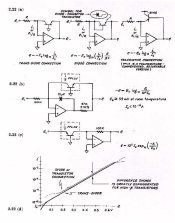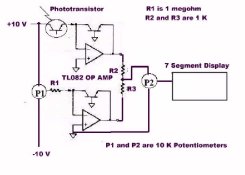Kirk Keyes
Member
Just for future reference, if we can get to 1/20th on a mm aperatures then graininess measurements may be possible...
From http://www.kodak.com/global/en/professional/support/techPubs/e58/e58.jhtml
THE RMS-GRANULARITY METHOD
The characteristics that cause graininess in a photographic image can be measured using a micro-densitometer to scan density fluctuations in a uniformly exposed and processed piece of film. In practice, a single microdensitometer reading aperture of 48 micrometres in diameter is used. The 48 micrometre aperture corresponds to about a 12X magnification. You could vary the size of the aperture to represent changes in film magnification, but it's not necessary. For most films, the relative differences in granularity will also apply to other magnifications.
The rms deviations of the microdensitometer scan are then calculated using statistical formulas for standard deviation. This is the source of the term "rms granularity" which is generally used to express granularity measurement. You record the standard deviation of density as a decimal number, which is multiplied by 1,000 to make comparisons easier. The resulting number is usually between 5 and 50.
From http://www.kodak.com/global/en/professional/support/techPubs/e58/e58.jhtml
THE RMS-GRANULARITY METHOD
The characteristics that cause graininess in a photographic image can be measured using a micro-densitometer to scan density fluctuations in a uniformly exposed and processed piece of film. In practice, a single microdensitometer reading aperture of 48 micrometres in diameter is used. The 48 micrometre aperture corresponds to about a 12X magnification. You could vary the size of the aperture to represent changes in film magnification, but it's not necessary. For most films, the relative differences in granularity will also apply to other magnifications.
The rms deviations of the microdensitometer scan are then calculated using statistical formulas for standard deviation. This is the source of the term "rms granularity" which is generally used to express granularity measurement. You record the standard deviation of density as a decimal number, which is multiplied by 1,000 to make comparisons easier. The resulting number is usually between 5 and 50.












